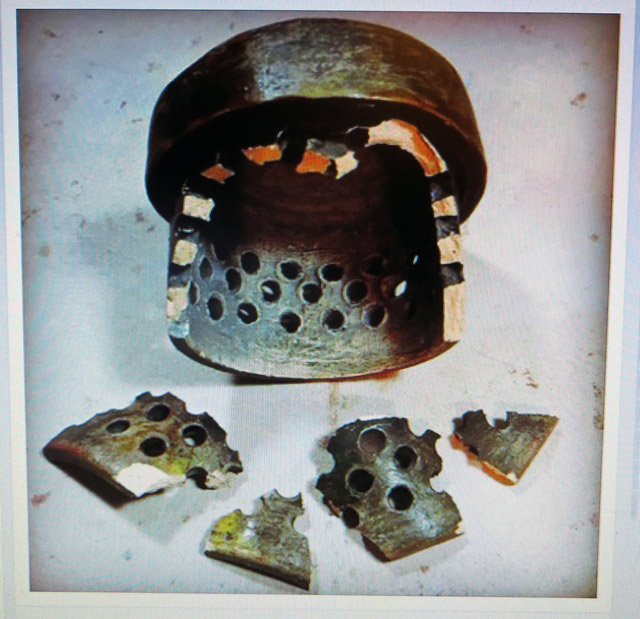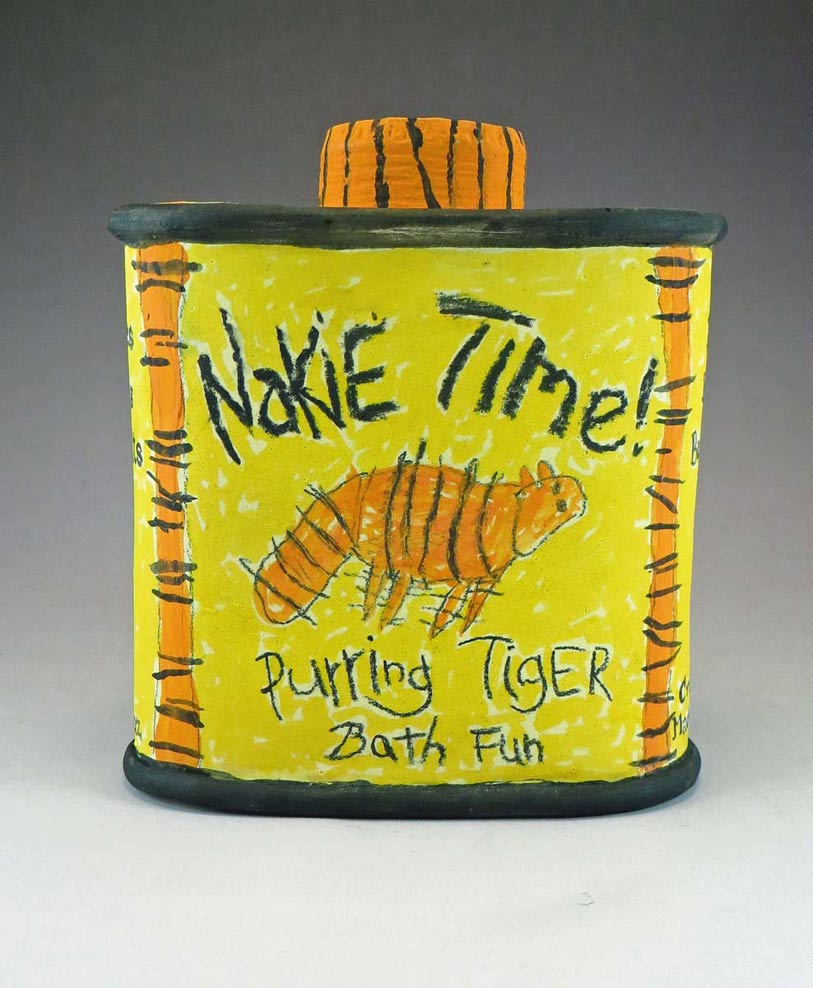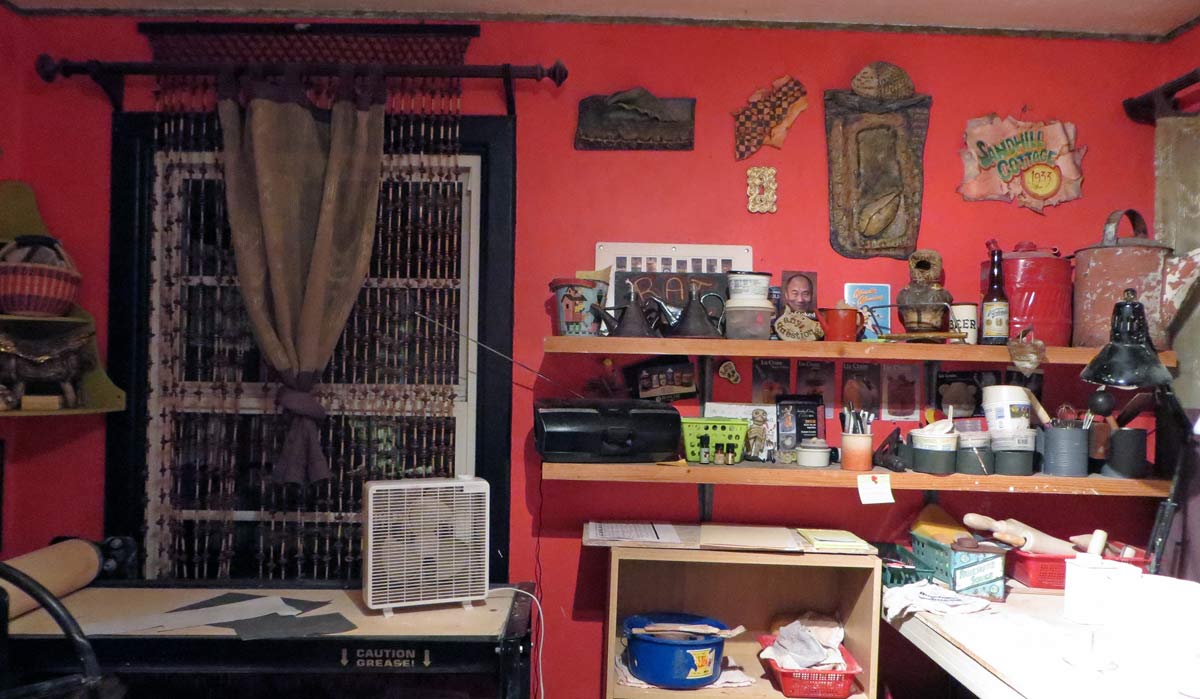
Why would I, a longtime confirmed handbuilder-of-clay, seek out and buy a book dedicated to wheel throwing? Am I switching teams? Not hardly! I have no intention of throwing pots.
So, then, what gives? And why this particular book? I’ll explain.

Why would I, a longtime confirmed handbuilder-of-clay, seek out and buy a book dedicated to wheel throwing? Am I switching teams? Not hardly! I have no intention of throwing pots.
So, then, what gives? And why this particular book? I’ll explain.

Continuing with our current theme, Ceramic Breakage, here’s a story with a happier ending. Ceramic stuff breaks all the time. Not only can it crack at every stage of construction, but, as we know, it retains permanent vulnerability to hard knocks and gravity. Spend more than a few months around clay and you will certainly get the opportunity to try your hand at putting Humpty Dumpty back together again. It pays to have a few slick repair chops in your toolbelt, but you get them from experience. I’ll describe the moves I used to repair the top of an incinerator sculpture I made in 2009.

Smaragos is one of the five Greek Gods of Pottery, the Daimones Keramikoi. It appears they are all wrathful and need constant appeasement. Smaragos is The Smasher. As in demonically smashed, crashed, dropped and probably lobbed. In these modern times he moonlights at UPS.

All my Creative Blocks are the same: Blocky. Un-Fun. Worrisome. Here’s a rant from inside my current one.

Why for sanity’s sake would a professional ceramic artist take a Graphic Design class? As the semester winds down and I see what I have – and sadly have not – learned for my time and angst, I am asking myself that. My desired takeaway – design layout skills which I could translate to the surface decoration of my cans – seemed straightforward enough, but I was woefully blindsided by my cluelessness of what would be involved to get there.Read More >

This is the last installment of the Virtual Studio Tour. It knits up the four walls of my creative space. (You can read about the North Wall, the East Wall, and the South Wall to complete your own tour.) This wall is directly opposite the door and what’s on it is the most visible, albeit the most distant. Visitors to my actual Open Studio will see this, but maybe not get all the 411 that you will get here. Enjoy!
MORE horizontal workspace and MORE shelves? Yep. It’s how I roll (pun intended.) Actually, I see this as a second control panel. From left to right we have a slab roller which is more often pressed into horizontal work space and storage. Then a bookcase I could use better, but right now gives me admin area on top for papers and notepads that stay clean as well as the all-important KZSC/KPIG/KKUP current program schedules (since I am too busy/messy/lazy to manage CDs and audio books.) It is also a place to keep clean rags and dirty tools. Below that are spare tools, tubs of slips, a hair dryer, also the place that the fan is stored, but folks, it has been HOT lately, so that cool breeze stays out.
Last, a couple more shelves with a motley assortment of usefulness and inspirations, which is continued onto the wall above.

I love good sturdy tools. I used to have an aircraft carrier-sized Brent slab roller (an SR-36, meaning it was nearly 2 1/2 times wider and a LOT longer than this one, which is an SR-14.) The big one dominated the garage. Then, magically, this studio-sized one was GIVEN to me. (Thank you MJ!) It is the just-right Goldilocks solution that I also use for: a work surface, easy-grab storage on the shelf, and a place for clay on the floor beneath. Down low, too, there is that lifetime supply roll of plastic cleaner’s clothing bags. The white round thing? A humongous plaster form given to me my Slab Sister, Elaine Pinkernell. Come this winter, I aim to play with it in making some larger slab pieces.

There’s a bit of everything here: collected artwork, curated postcards and humor, work that needs replicating in order to do it better, the Dalai Lama, the Radio/CDplayer/iPod player, and pens and pencils. The wall above is covered in my own attempts at ceramic wall art – EXCEPT for the license plate piece – that was a rusty plate I found when I lived at Ham’s Station in Amador County which was just given some real artistic love by Diane Patracuola, whose work is evidenced on every wall in my studio in some way, intentionally but inadvertently, if you know what I mean. Off to the right, more forming, texturing and decorating tools. All this is on my left wing as I work.
I may do one more Virtual Studio Tour post about my kilns, but that will probably happen as a Coda, because during Open Studios folks only get to view a photo of my kiln shed, not the space itself. So that will be the lagniappe for you here.
Liz Crain, who is seriously in the throes of getting her Open Studios chops honed and invites you to drop by on October 10-11 from 10-6. Email her or see the Open Studios Guide for details. If you are unable to visit in person, you are invited to drop by her brand new SHOP here on the website. It’s a small endeavor now, but will grow right after Open Studios, and you are the first to know about it!

Moving right along with the Virtual Studio Tour, this third week we turn to the shorty South Wall. It’s relatively short because the usable area falls between the furniture on the adjacent walls and the closet door. But what it lacks in length, it makes up for in versatility and depth, as you will soon see. (You are also invited to read about the North Wall and the East Wall.) This very close look at my studio is a way for everyone to step inside and see what’s where and why. It is so much MORE than you would get, even in a personal tour or during my upcoming Open Studios weekend, when you can look, but not go in.